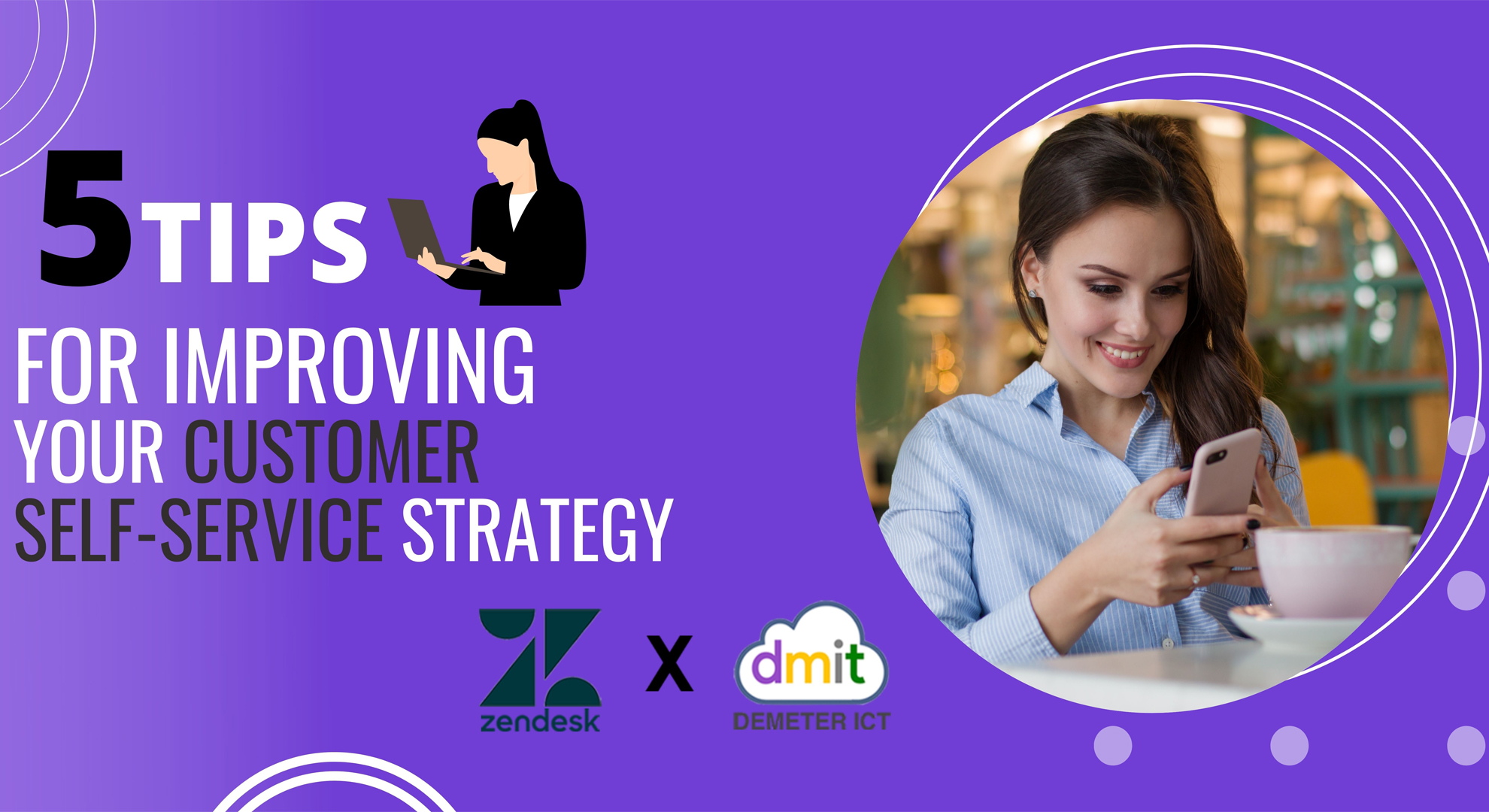5 tips for improving your customer self-service strategy
What is customer self-service?
Customer self-service is the process by which customers resolve their own problems without help from a support agent.
With today’s self-service tools, self customer service isn’t relegated to one platform. A customer can chat with a bot on your mobile app that connects that customer with a help center article. Your company can follow up via automated text message to see if the customer got answers they needed. If not, the customer can schedule a call with a support representative at their convenience.
The foundation of a great customer self-service experience is simplicity.
You need to make it as straightforward as possible for customers to:
– Find an answer.
– Understand the action they need to take.
– Act on resolving the issue.
Follow that North Star of simplicity by focusing your customer self-service strategy on these five crucial elements :
1. Discoverability
In a great self-service experience, the right answers are easy to find. Make your self-service options more discoverable by introducing them as the first touchpoint in every channel your company uses. Prominently feature a link to your help center on your home page, and make sure your internal search bar takes people to relevant information for the terms they’re searching. The moment someone visits your website, your support chatbot should greet them and ask if they need help.
You can also increase the discoverability of your help content with search engine optimization. That way, your customers are still likely to find the company’s own help resources if they google their problem.
2. Proactivity
Even better than making your answers easy to find, create proactive self-service solutions, so customers don’t have to ask for help in the first place. More companies are reaching out via text, email, or phone before a customer reports a problem. Gartner predicts that “By 2025, proactive (outbound) customer engagement interactions will outnumber reactive (inbound) customer engagement interactions.”
Here’s a commonplace example of proactive self-service in the pandemic era: the follow-up messaging after a grocery delivery. Customers get a message via text or mobile app asking how the delivery went and if anything was missing from the order. If the customer has an issue, they can immediately follow the steps to resolving it—no search for answers needed.

3. Accessibility
Different customer support channels have distinct accessibility advantages. Call centers, for example, can be helpful for people with visual impairments but not for non-speaking people. Web-based knowledge centers and chatbots are helpful for people with hearing challenges but not for people without internet access.
As you evaluate your current self-service options, consider the barriers your customers may face when looking for help. Can your chatbot assist foreign-language speakers? Does your knowledge base offer content in multiple formats (e.g., video tutorials, text-based step-by-step guides) to support the needs of people with disabilities? It helps to have self-service tools in place that consistently optimize accessibility.
4. Clarity
Simply put: Don’t confuse or overwhelm customers with too much information at once.
Sometimes, companies use technical or corporate jargon instead of plain language. Study knowledge base search trends to see if you’re using the same terms your customers are using when looking for information. To make sure your help content is readable for the average consumer, aim for a U.S.8th-grade reading level. Use an AI writing assistant tool to keep your language consistent, grammatically correct, and clear.
A lot of these tactics follow from smart knowledge base design. Organize knowledge base articles in categories for easy navigation. If it’s too cluttered or chaotic, customers may give up their search before they begin.

5. Innovation
It’s a common misstep for companies to take a rigid, one-and-done approach to setting up a self-service channel. As customers embrace new ways of looking for help, your self-service process needs to change with them.
Use key self-service metrics like customer satisfaction (CSAT) scores, tickets created, and bounce rates to create benchmarks for improvement.
Korman advises companies to take an iterative approach: “Start small. Start with just the things that are most important, and then learn as you go.” Consider beta testing new approaches with small customer groups before rolling out changes company-wide.
Demeter ICT – No. 1 Zendesk Premier Partner in Asia Pacific and Great China Region.
For more information, Zendesk product and services, please contact us.
- support@demeterict.com





